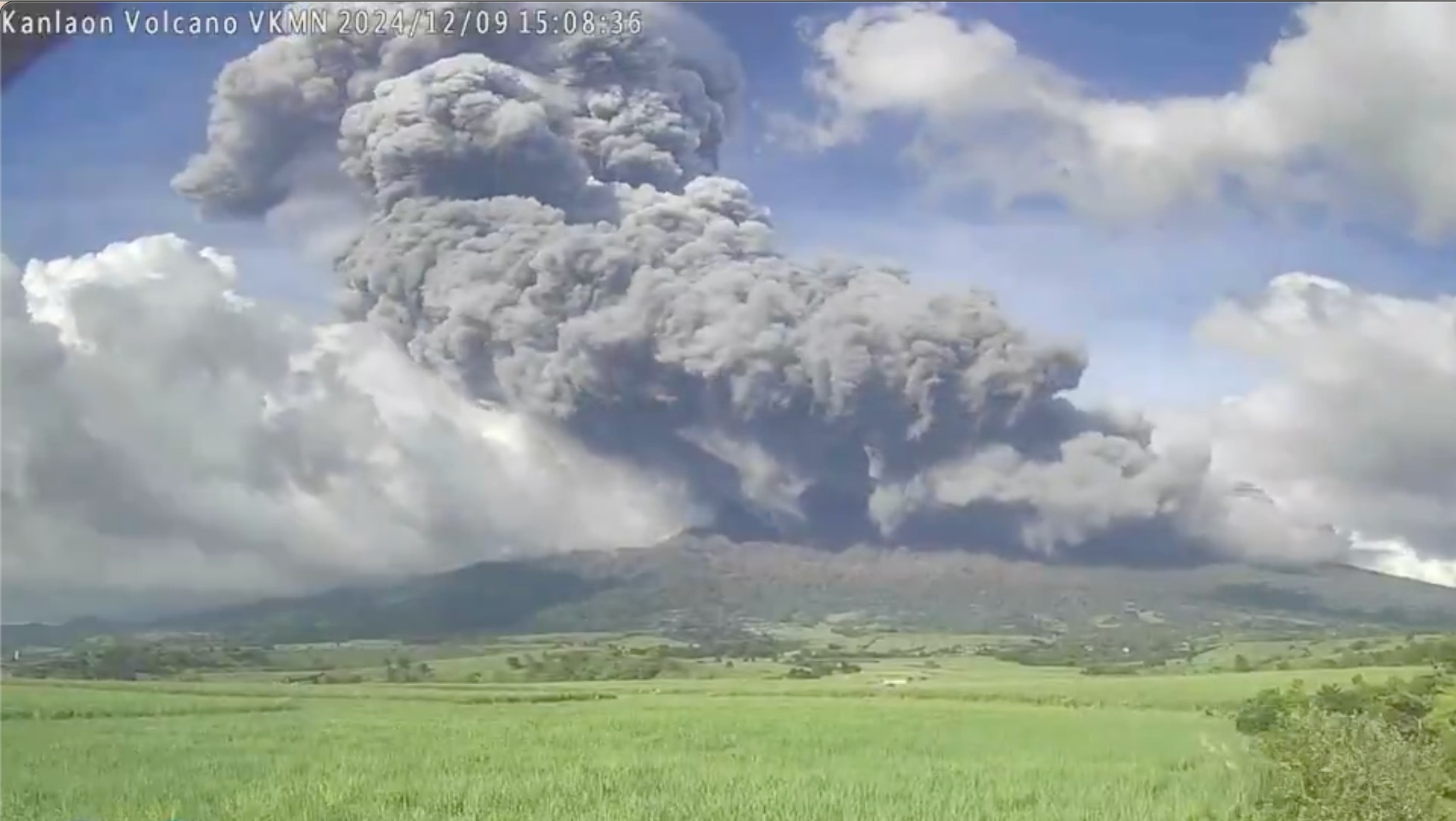Philippines volcanic eruption: Kanlaon volcano 'may progress to further explosive eruptions'
The Kanlaon volcano in the Philippines erupted today (Dec. 9) at 3:03 p.m. local time, spouting an eruption column of up to 1.86 miles (3 kilometers) into the sky and triggering the evacuation of 87,000 people.

A large volcano in the central Philippines erupted today (Dec. 9) at 3:03 p.m. local time, spouting a column of ash and gas up to 1.86 miles (3 kilometers) into the sky, according to the Philippine Institute of Volcanology and Seismology (PHIVOLCS).
Thermal and X-ray camera monitors recorded pyroclastic density currents — hot flows of ash and debris that hug the ground and can travel hundreds of feet per second — descending the slopes of Mount Kanlaon. Local government units have advised people to evacuate a 3.7 mile (6 kilometers) radius around the site, and the country's civil defence office has stated that the urgent evacuation of 87,000 people is already underway.
In a statement, PHIVOLCS representatives warned the volcano "may progress to further explosive eruptions."
The Kanlaon volcano is one of two dozen active volcanoes in the Philippines and is located in the central provinces of Negros Occidental and Negros Oriental. It is one of the most active volcanoes in the country and has already erupted once before this year, on June 3, 2024. Prior to this, its last eruption was in December 2017.
Related: US volcano quiz: How many can you name in 10 minutes?
The latest eruption follows several weeks of volcanic unrest in the region. According to PHIVOLCS, continuous degassing and occasional emissions of ash have occurred at the summit crater since Oct. 19.
Between five and 26 daily earthquakes have been recorded in the vicinity since late November.
Sign up for the Live Science daily newsletter now
Get the world’s most fascinating discoveries delivered straight to your inbox.
PHIVOLCS has raised the volcano's Alert Level to Alert Level 3 — the agency's highest classification of volcanic unrest and third highest Alert Level overall. Alert Level 3 indicates that the unrest is being driven by a magmatic intrusion into shallow levels of the volcano's cone, and that a "hazardous eruption" could occur within weeks.
The next level on the scale, Alert Level 4, is designated when a low-level magmatic eruption is under way, which can progress to a highly hazardous major eruption — Alert Level 5 — within hours or days.
Meanwhile, PHIVOLCS continues to monitor the pyroclastic density currents along the volcano's southeastern flanks. According to the British Geological Survey, these currents are "inherently unpredictable" and are "perhaps the most hazardous event to local areas" during explosive volcanic eruptions.

Pandora is the trending news editor at Live Science. She is also a science presenter and previously worked as Senior Science and Health Reporter at Newsweek. Pandora holds a Biological Sciences degree from the University of Oxford, where she specialised in biochemistry and molecular biology.









